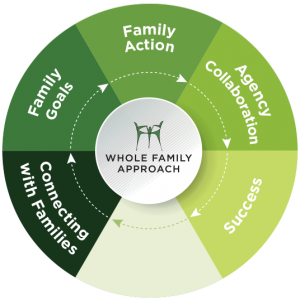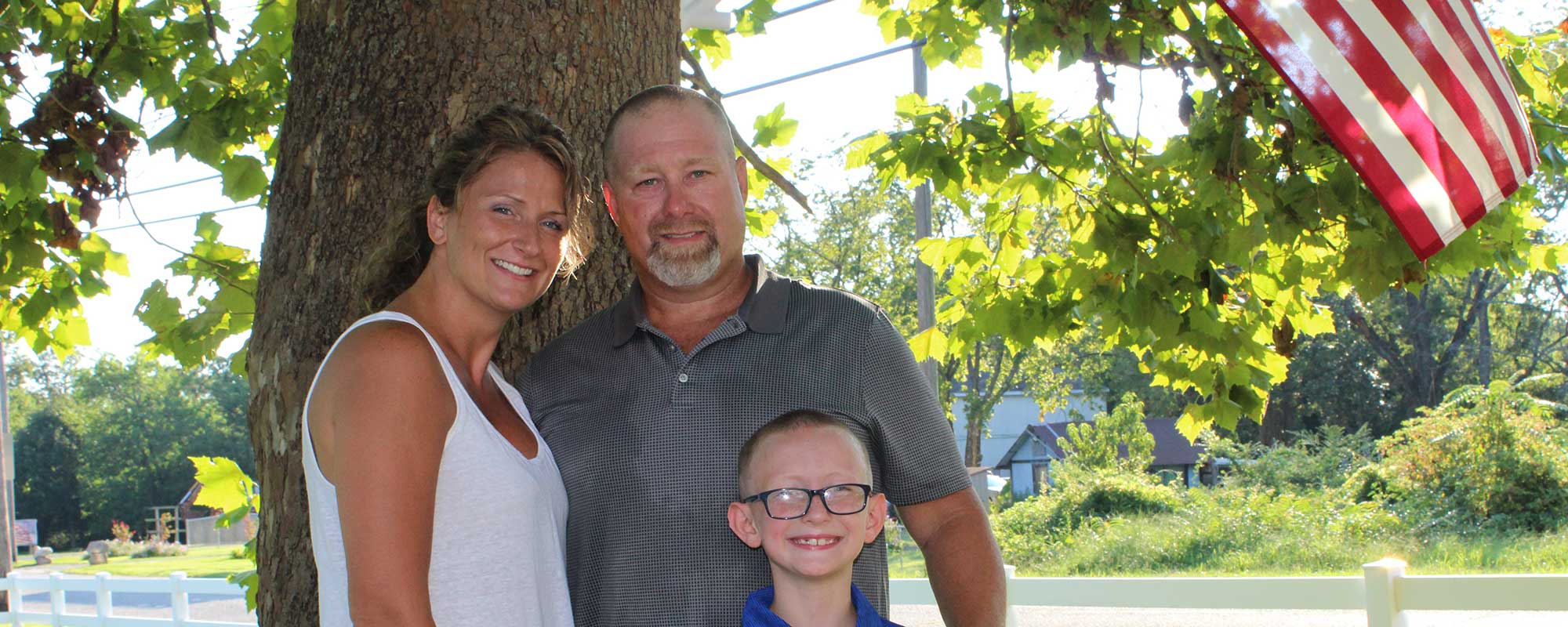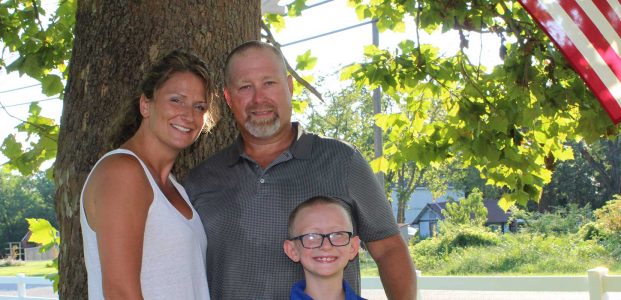 Families know what they want and need in life. When all members of a family work together, they can set goals and create plans to successfully establish and maintain their stability and well-being. The Whole Family Approach is a family-led strategy which provides adults and children with the tools to set, plan for, and achieve their goals together.
Families know what they want and need in life. When all members of a family work together, they can set goals and create plans to successfully establish and maintain their stability and well-being. The Whole Family Approach is a family-led strategy which provides adults and children with the tools to set, plan for, and achieve their goals together.
This family-led strategy is effective in a range of settings — rural, urban, and suburban — and enables families to work together to realize any number of goals, ranging from education and health to financial stability and relationship building. Each community’s approach will look a little different, but the core steps should remain the same.
Below is a guide to implementing the Whole Family Approach so your organization can start the vital work of partnering with the adults and children on your community to strengthen relationships, establish stability and reach their full potential together. You can also learn how the grantees of the Pascale Sykes Foundation have incorporated this Approach into their work as collaboratives and single agencies.
 Step 1: Connecting with Families
Step 1: Connecting with Families
Families are paired with a coach and identify goals.
The Whole Family Approach is best implemented through a mission-driven collaborative model where multiple agencies come together to provide holistic services. Identify organizations in your community that can provide families with services complementary to those provided by your organization. For example, one organization might specialize in child education, another in health care, another in financial planning, and another in vocational training.
Consider partnering with initiatives you already have a productive relationship with. Agree on a memorandum of understanding outlining each initiative’s role and collaboration processes in order to best function as one effort with a shared mission. Together, you can form a supportive network to meet the varied goals of all family members. In terms of getting started, 3-6 months is a realistic timeframe for setting up the collaborative and training family coaches.
- Create a shared mission: A mission statement provides direction, focus, and accountability, not just for you, but for your team. While each organization in the collaborative will already have its own mission, creating a new one for the collaborative will reinforce what you hope to accomplish together.
- Set SMART goals: This will make it easy to establish clear and measurable goals for the collaborative.
- Develop an operating budget
- Develop data collection, sharing and storing tools: Data gathering should be electronic and accessible to all collaborators. Align your collection tools with any required reporting from donors.
- Determine how you will track a family’s progress
- Create a service delivery model
Begin outreach to recruit families to participate in the Whole Family Approach program. Identify where families congregate in your community and decide how to gain visibility in these spaces. This could take the form of short presentations or flyer distribution at schools, places of worship, and other community centers. Also, consider how you can build off of existing relationships with families that are accessing services across organizations in your collaborative. During outreach, provide families with a quick overview of what the journey ahead will look like.
Research shows that families with at least two dedicated adult caregivers yield the best outcomes for the children in the family. As a result, a core component of the Whole Family Approach is ensuring that all participating families include two adult caregivers. These two adults may include a combination of parents, grandparents, grown children, other relatives, or close family friends. Ideally, at least one of the caretakers must be working or able to work.
Although the Whole Family Approach does not have any income requirements, the program’s focus is primarily on working, low-income families who are living paycheck to paycheck — and connecting those families to the supports and tools they need to become thriving members of the community.
 Step 2: Set Family Goals
Step 2: Set Family Goals
Children, caregivers, and coach identify steps to achieve interconnected individual and family goals
From the first meeting with the family, the coach should give clear expectations that this program is about the family setting their own goals and moving forward with a plan to meet those goals. Start by getting to know the family’s story and talk in-depth about their lives and aspirations, family dynamics, health, education background, etc.
Throughout the discussion, one or two clear immediate goals will likely emerge. Discuss these goals with the family and how each family member’s behaviors factor into it. Many goals require the effort of more than one person to be accomplished. Families don’t always recognize this on their own, so providing concrete examples and real-life connections is always helpful.
Once a solid rapport and relationship has been established with a family, encouraging them to set goals comes much more naturally. It’s not always easy — many people have to shift from a mentality of survival to one of thriving, but when people trust that they matter to the providers and agencies who are working with them, they are willing to take steps they might not have otherwise. As the family considers their goals, emphasize that these goals are designed to empower them to solve concerns they have now and ones they anticipate down the road.
The Whole Family Approach can be used to partner with families to achieve a wide variety of goals. The coach will support the family in identifying one to two priority goals. These will likely be a combination of individual and family-wide goals that overlap. Below are a few key areas the Whole Family Approach is particularly effective in improving outcomes and establishing well-being for the families.
- Foster children: Improving the lives of abused and neglected children by improving their academic performance and support network
- Education for youth: Promoting positive youth development programs in schools that incorporate services for individual students, small groups, teachers, whole classrooms, parents, and families
- Neighborhood revitalization: Improving the quality of life for whole families through a combination of informal group and individual case management and community development
- Immigrant assistance: Strengthening the immigrant, working-class population by providing training/support to whole families to promote well-being and financial stability
- Education for adults: Providing resources, coaching, and formal training for adults in the family to improve their family’s economic growth, health, overall well-being, and support network
 Step 3: Family Action
Step 3: Family Action
Family members use resources, tools, and support networks to accomplish steps toward goals
The coach plays a vital role in guiding adults and children in the family to break down their ambitions into smaller behavioral objectives that will move them closer to their goals. Setting a large life goal can seem overwhelming to some. Breaking the goal down into smaller, more manageable steps for each family member can feel more achievable.
For example, a goal might be for a parent to find a better paying job. The objectives then might be:
- Access additional job training
- Find child care in order to attend job training or different working hours
- Access support to update resume
- Meet as a family to discuss parent’s job goals.
Importantly, the coach will help connect the family with a support network, tools and resources in their community that can help them achieve these objectives. Many of these tools and resources are accessible to the family through the collaborative. This makes the collaborative a one-stop shop for all family members to receive the support they need to reach their goals collectively.
The types of tools and services families may need access to will vary widely depending on their goals and may include: relationship building classes, entrepreneurial skills classes, physical, mental and emotional health services, afterschool programs, English as a second language classes, job training, financial planning, and more.
Examples of when families may benefit from additional support include accessing childcare, celebrating family accomplishments, overcoming family challenges, securing family transportation, celebrating holidays and more.
 Step 4: Agency Collaboration
Step 4: Agency Collaboration
A team of agencies connected to the coach provides holistic, coordinated support
Working as a Whole Family Approach collaborative allows existing social services to work together. It puts equal priority on the needs of adults and children in the family and enables seamless collaboration among multiple organizations to holistically support a family’s plans for the future.
As a collaborative, agree to a shared reporting system that allows coaches and service providers to easily update and share progress data for each family. This enables the collaborative members to adapt to the families’ progress, creating a responsive rather than reactive system.
 Step 5: Empowered Families
Step 5: Empowered Families
Families achieve and maintain their goals, assuring stable and healthy futures
Each individual and family will achieve their goals at a different pace. For some, it is a two-steps-forward, one-step-back process. The coach has the important role of continuously encouraging families to keep working toward their goals and adjusting their plans when needed along the way. Once a family or individual achieves all their goals, they enter the maintenance phase.
In this phase, the coach checks in with the family on a quarterly basis or as needed by the family to see if they are maintaining their goals. This might be in person or over the phone.


